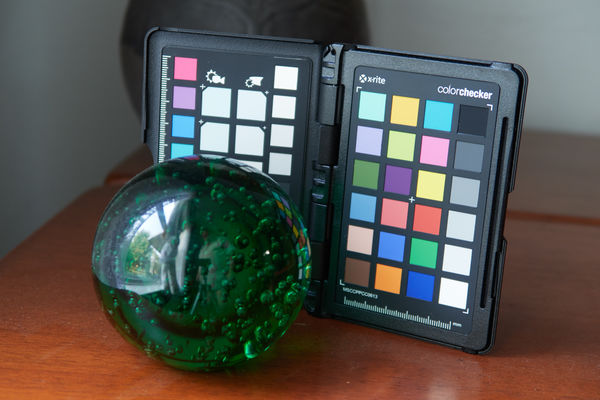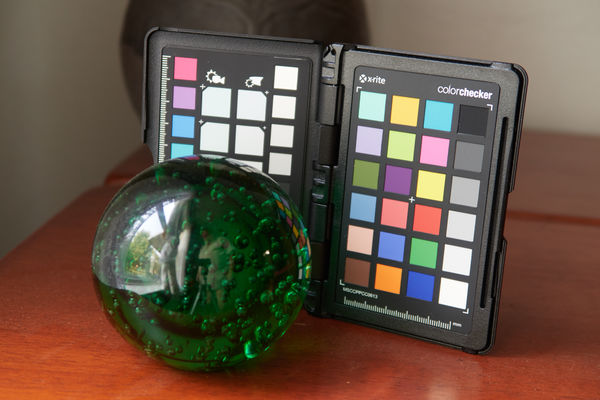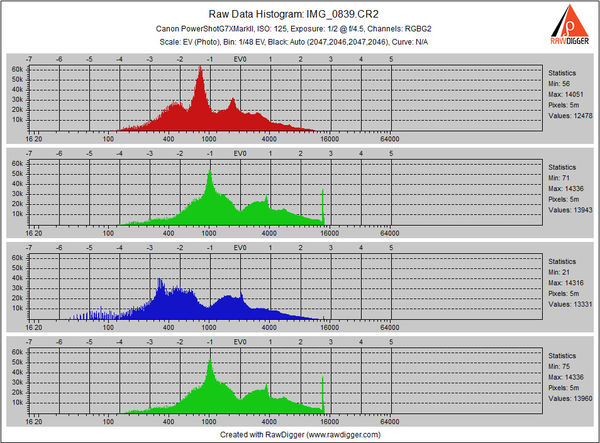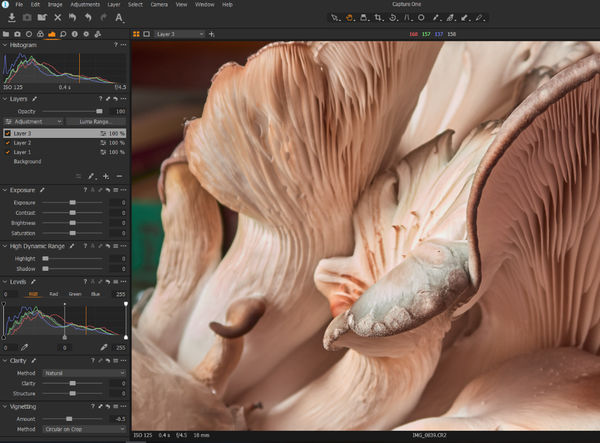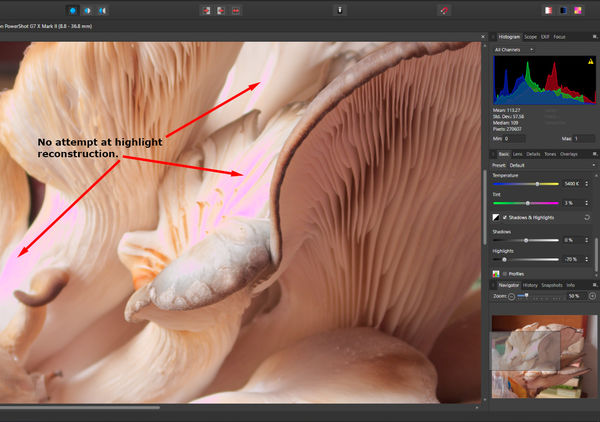Software Survey
Aug 17, 2019 14:35:46 #
Ysarex
Loc: St. Louis
Delderby wrote:
I have enjoyed following your discussion, which has helped me to understand some differences in the design of the how and why of high level editors. I have used PhotoPlus, culminating in X8, for years (Serif's last upgrade before introducing AP) and at my level am used to the "develop then edit" methodology,
We all got used to the "develop then edit" methodology in the past not because it was the best way to work but because it was the only way to work. The parametric raw converters of the past decades did not provide sufficiently robust tools to handle the editing task start to finish and so we all adopted a raw processing workflow that began with application 1) parametric raw converter and ended with application 2) raster RGB image editor.
There's a fundamental problem with that raw processing workflow. The gap between those two applications functions like a one way door. Once we step through it we have a problem going back. Once an edit is completed in both applications we can't later decide to revise or change what we did in application 1) raw converter without being forced to re-do our work in application 2) raster editor. A change made in app 1) doesn't update through app 2).
Recognizing this we would often adopt an approach that shifted emphasis to app 2) the raster editor. That's Affinity's approach now. Adobe tried to address this structural problem in PS by creating "smart objects" that passed from app 1) ACR to app 2) PS. While editing the "smart object" in PS you could return to ACR, make a change and have that change update through the "smart object" back into PS. Adobe was at least looking for a solution to what we recognized as a problem. That gave us a patch but not a fix.
Delderby wrote:
and the principle that RAW enables photographers t... (show quote)
"High level editing after development" means app 2) the raster RGB image editor. That's an embrace of the old methodology using a two app solution and it doesn't solve the problem of the unbridgeable gap between the two apps. It also maintains reliance on huge RGB image files that take up a whole lot of hard drive space.
With more robust toolsets in the parametric editors we can remove app 2) the raster editor from the workflow entirely. In other words we're booting Photoshop, Affinity, Elements, PaintShop, GIMP, etc. to the curb. If successful then we gain two advantages: 1. A 100% non-destructive and non-linearly re-editable raw workflow which is not fully possible using the old two app solution. And 2. About 80% less required disk storage space. Disadvantages? None. In special cases where a raster editor is still necessary buy a copy of AP it's cheap.
Joe
Aug 17, 2019 16:36:32 #
Ysarex wrote:
"High level editing after development" m... (show quote)
Thanks Joe - your time and effort in acknowledging and discussing this down at my level of knowledge and therefore comprehension is very much appreciated. I'm getting a bit long in the tooth for change - but the whole of this discussion has been most enlightening and interesting. Thanks also to mwsilvers, wanderer2 and others who made a contribution. Del.

Aug 17, 2019 18:08:04 #
Ysarex wrote:
"High level editing after development" means app 2) the raster RGB image editor. That's an embrace of the old methodology using a two app solution and it doesn't solve the problem of the unbridgeable gap between the two apps. ...
"Solving" that challenge may be pipe dream. But it may simply not be practical or worth the effort otherwise someone would already offer it.
You would need to limit any work that you do in the raster editor to changes that you could not already do in the parametric stage since changing an earlier parametric instruction can conflict with what you are now able to do only in a raster editor. For example, changing the overall color balance would precede any changes you make in the shadow, mid-tome or highlight colors. Applying a gradient, changing the tone curve or converting to B&W might do the same. But these can already be done in a robust parameter editor. It would be pointless to leave them for a raster editor.
But there will always be stuff you might want to do that does not require a parametric approach.
We might want to take different paths after finishing with the parametric editor. That can depend on whether we want to post, project, display on a monitor or print an image. If printing, on which medium we want to print. That's a valid reason to draw the line and follow separate paths for different objectives.
An alternative might be to start with two or more copies of the raw file, develop one to the point where your objectives diverge, apply all of the changes from the developed image to the copies and then proceed to make any different remaining changes to the others. Sounds like a lot of work but you are likely to need to do this only once in a blue moon.
Aug 17, 2019 21:54:12 #
mwsilvers
Loc: Central New Jersey
selmslie wrote:
"Solving" that challenge may be pipe dre... (show quote)
"An alternative might be to start with two or more copies of the raw file, develop one to the point where your objectives diverge, apply all of the changes from the developed image to the copies and then proceed to make any different remaining changes to the others. Sounds like a lot of work but you are likely to need to do this only once in a blue moon."
Its not a lot of work, and in fact takes almost no effort at all, if you use the virtual copy feature available in most full featured raw programs. And its not a once in a blue moon thing, I make virtual copies almost every time I edit. It gives me multiple ways of seeing the same image. Virtual copies don't really exist. They are alternative sets of edits against the original file that are stored separately in the software's database database or sidecar files. They don't actually exist as physical copies of a file but for all intents and purposes are treated that way when editing. When you create a virtual copy any of the edits already applied are included in it. They are used to generate different versions of the same edited files at different points in time and to compare different applications of edits. You can even have virtual copies of virtual copies with different levels of editing depending on which version of the file you are generating them from. Its very easy and quick to do, (usually a single mouse click) but the concept might be confusing to people at first if they are unaware of it. Once you see it in action you quickly realize how powerful and easy to use it is.
Virtual copy functionality is available in Lightroom, DXO PhotoLab, Capture One Pro, ON1 and others. You can make as many virtual copies as you want at different stages of development. The only down side if you make more than a few virtual copies for any given image, is keeping track of which is which even though they may be named differently. In non-destructive editors like I mentioned above, these virtual copies with their own edits will exist forever until you delete them and can be edited where you left off at any time in the future, and you can also make new virtual copies at any time in the future. The Develop persona doesn't have that feature which is another major limitation of using it. Of course you couldn't take advantage of virtual copies in Affinity's Develop persona anyway since you wouldn't be able to go back to access or update them. That is a major downside of the Develop persona. Once you create an output file from the raw with the baked in edits for the Photo persona, the raw edits are no longer available.
Aug 18, 2019 08:29:41 #
mwsilvers wrote:
... Its not a lot of work, and in fact takes almost no effort at all, if you use the virtual copy feature available in most full featured raw programs.
I realize that the mechanics are not an issue since I have been using Capture One Pro for several years. Following two or more objectives is is easy but keeping track of what you did and why you did it is where it gets sticky.
That's why I routinely follow a single path - to get an image that works on my display. That's usually good enough for public consumption.
The only time I might try a different approach is when I decide to print. i might use a slightly different approach for matte paper that for semi-gloss, gloss or other medium. That's going to take some trial and error.
And I still do a lot of work with film. I can use Capture One on a scanned JPEG or TIFF just as easily as I can with a raw file.
mwsilvers wrote:
... Of course you couldn't take advantage of virtual copies in Affinity's Develop persona anyway since you wouldn't be able to go back to access or update them. That is a major downside of the Develop persona. Once you create an output file from the raw with the baked in edits for the Photo persona, the raw edits are no longer available.
For that and other reasons I have no incentive to try Affinity's software.
Aug 18, 2019 21:11:37 #
Wanderer2
Loc: Colorado Rocky Mountains
This discussion about Affinity Photo and it's perceived major inadequacies and faults by 3 or more posters on the thread has gotten way over may head. I cannot relate these claimed faults to my own use, and results with, the program, and thus do not feel qualified to discuss the issue with individuals who are so much more accomplished in this area than I. However, I also cannot accept the criticisms as valid without confirmation that these are correct from persons who are more experienced than I with photo processing/editing and have major, indepth experience with AP itself. What is being said is in contrast to about one year of use of AP by me and is not supported by the 419 page Workbook published by Affinity, but the claims are obviously made by individuals with great depth of knowledge in this field, and are very, very well articulated. Thus, this is a dilemma for me.
Therefore I intend to post the criticisms and claims made here on the Affinity Forum, quoting these anonymously of course. I will focus on the claims that AP is forced destructive and that it cannot do HSL or highlight reconstruction in the Develop Persona, including what has been said about the conversion of files from Raw to RGB (I thought RGB was a color space and a file extension, not a full file, before all of this information was posted!).
Hopefully with some further help I will be able to fully understand Affinity Photo and determine if at some point I will need to move to a different program. Thanks to all who have participated in the thread and contributed so much time supporting their views.
Mike
Therefore I intend to post the criticisms and claims made here on the Affinity Forum, quoting these anonymously of course. I will focus on the claims that AP is forced destructive and that it cannot do HSL or highlight reconstruction in the Develop Persona, including what has been said about the conversion of files from Raw to RGB (I thought RGB was a color space and a file extension, not a full file, before all of this information was posted!).
Hopefully with some further help I will be able to fully understand Affinity Photo and determine if at some point I will need to move to a different program. Thanks to all who have participated in the thread and contributed so much time supporting their views.
Mike
Aug 18, 2019 22:11:40 #
mwsilvers
Loc: Central New Jersey
Wanderer2 wrote:
This discussion about Affinity Photo and it's per... (show quote)
Please understand that the comments about the Develop persona are not intended as criticisms of Affinitys as a whole, which I have indicated several times is a very fine program. What we have highlighted are just limitations in the Develop persona's raw workflow. For many people those limitations may be inconsequential. For most experienced raw shooters however the Develop workflow falls short of our expectations.
You absolutely do not need to change programs to something other than Affinity unless you personally think it's lacking something that's important to you. It is highly unlikely that anyone invested in Affinity will differ in their opinion from what you read on page 419. The comments about performing minimal editing in the Develop persona and most of the "real" editing in the Photo persona is only because of the limited number of feature in Develop that they provide. I suspect one of the reasons is to simplify the process for newbies and light raw users. Understanding and using top-of-the-line raw programs can be a bit daunting for new users looking for intuitive easy-to-use software.
You also seem to be taking this Affinity workbook as some sort of Bible for post-processing. It isn't. It is nothing more than a set of instructions about how to accomplish tasks in Affinity.
It is more than likely that other users you speak to on the online forums, will indicate their satisfaction with the Develop persona. However, I would tend to think that they may not have significant experience with, and in-depth knowledge of, the various top-of-the-line raw editors that are available today. I say this because if they are experienced raw shooters they would probably be dissatisfied to one degree or another with Develop. Some users may be willing to give up raw editing flexibility and quality if everything else in Affinity meets their needs. And that's terrific.
Aug 18, 2019 22:27:22 #
Ysarex
Loc: St. Louis
Wanderer2 wrote:
This discussion about Affinity Photo and it's per... (show quote)
I can't help now, but I'll get back in the morning and give you more detailed explanations that you can follow along with.
Joe
Aug 19, 2019 11:07:18 #
Ysarex
Loc: St. Louis
Wanderer2 wrote:
This discussion about Affinity Photo and it's per... (show quote)
Hi Mike,
Hope you're still following this.
Here's a link to a Canon CR2 (raw) file that you can download.
https://www.dropbox.com/s/talgxzfg6wxbqkz/IMG_1451.CR2?dl=0
It's a photo of a Colorchecker on a table. The table is next to a large window and what I did was turn off the interior lights so that the window is the only source of illumination. I set the camera's WB to the daylight preset (daylight coming through the window). I knew that would produce a miss-match as the sun itself was not shining through the window and so the Colorchecker is illuminated by bluer skylight (but early morning). WB in the camera's JPEG is off then with the JPEG appearing too blue. This is an exercise and the Colorchecker is a testing tool.
Open the file in Affinity and it will of course open in the Develop Persona. Under the Basic panel go straight to White Balance and you'll see there are already values in place for temperature and tint. Affinity is getting those values based on the camera's WB preset for daylight. Write them down if you can't remember them. The bottom tool on the toolbar is the WB sampler. Get that tool and click on the light grey swatch in the Colorchecker 3rd up from the bottom in the greyscale along the checker's outside edge. The temp and tint values will change. Click around in that grey swatch and you'll get minor variations in the values. I settled on temp = 7300 K tint = 6%.
Don't make any other changes and just click Develop -- the raw data is converted to RGB data and the image is moved to the Photo Persona. Immediately save it as a afoto file. Close the file.
Now re-load the CR2 raw file. Had we used any other software for raw file processing those WB values that we previously set would have been saved for us so that upon re-open those values would be read and dropped in place. This is where Affinity is different than all the other software available and why we say Affinity is forced destructive. We did work setting the WB but in order to proceed processing the image we were forced to click Develop and our work was not saved. With the CR2 file re-opened go to White Balance and check the values there; they are the same values I told you to write down when you first opened the file. Don't change them. Just click Develop and convert the image. Once in the Photo Persona save this version of the image as an afoto file with a different name -- I'll call it the camera original WB version.
You'll encounter some Affinity advocates tell you that you can always take care of a problem editing the afoto file and in fact you can even move an afoto file into the Develop Persona and use those tools if you like. Someone who tells you that either a) doesn't understand what they're talking about or b) is being at least a little dishonest.
Let's see what happens. Open both afoto files now -- the one saved with the WB set near 7300K, 6% and the camera original WB version. Let's correct the camera original WB version to match the other. Select the camera original WB version and click the Develop Persona. Sure enough it loads and you can get access to the Develop tools. Go to White Balance and just type in the values we know are correct; 7300K, 6%. You can't -- that doesn't work because you have RGB data now and not a raw file. You can't set WB values now. OK, but the WB sampler will work right? Well it will kinda sort of try and work. Try it. Compare the two images (you'll have to click Develop). If you want to get persnickety about it use the Color Picker Tool and sample the color swatches.
Let's try this a different way. Don't save the changes to the camera original WB version, but instead close and re-open it. Forget about going to the Develop Persona as that didn't work. This time go to the Layers palette and click on the Adjustments icon. Up toward the top of the list you'll find White Balance. In the White Balance dialog lower left click on Picker and knock yourself out. You'll find that there's nothing in the image you can click on nor any values that you can set on those two sliders that will produce a matching image to the one produced when we white balanced the raw file. As you work to get some of the color swatches to match others will deviate more. Working with the afoto files you're working with RGB data and not raw data -- they don't respond the same way.
So you can't just do it in the Photo Persona or just move an RGB image back to Develop. Raw data WB versus RGB data WB don't produce identical results -- it matters how we do it. This photo was a test image. Let's assume instead we were working with a portrait in which case setting WB can be done clinically with a grey value but could also be set aesthetically to support an artistic interpretation. Let's assume you want the freedom to be able to change your mind later. We can just edit the afoto file, right? Yes you can but you won't get the same result that you'll get if you go back and actually change the raw WB values. What were those values I set three months ago? Affinity is the only raw conversion software that won't have saved them.
Joe
Aug 19, 2019 12:23:21 #
Ysarex wrote:
... Here's a link to a Canon CR2 (raw) file that you can download.
https://www.dropbox.com/s/talgxzfg6wxbqkz/IMG_1451.CR2?dl=0
It's a photo of a Colorchecker on a table. ...
https://www.dropbox.com/s/talgxzfg6wxbqkz/IMG_1451.CR2?dl=0
It's a photo of a Colorchecker on a table. ...
That's an interesting experiment.
I loaded the image into Capture One and saw that the image WB as shot was 5422° K and 1.3 tint (green/magenta). I assume that this was the Canon default for daylight.
As I clicked on the six squares with the WB probe on the right of the color checker I got a range of temperature readings (even within each individual square) of between 7500° and 7700° for each of the top five squares and about 7000° for the bottom square. The tint for all six squares was between 5.5 and 6.
There are a couple of problems with this test. The first is the effect of the green glass ball on the color checker. The second is the reflection of the light from the table on the bottom of the color checker which seems to have warmed up the bottom square. And of course we have no idea how the window may have affected the skylight.
Some takeaways:
1. Even the card and the eyedropper will give you inconsistent results.
2. Anything that the light passes through or reflects from on the way to the subject can affect the white balance.
3. There are lots of ways you can change the white balance and they all might look "right".
For the converted image I arbitrarily used 7500° and 5 tint but that's easy to change. Note that the wall in the background looks more neutral in the first image than in the "corrected" image.
Aug 19, 2019 13:06:33 #
Ysarex
Loc: St. Louis
selmslie wrote:
There are a couple of problems with this test. The first is the effect of the green glass ball on the color checker. The second is the reflection of the light from the table on the bottom of the color checker which seems to have warmed up the bottom square. And of course we have no idea how the window may have affected the skylight.
Immaterial to the topic at hand. What version of Affinity Photo are you using?
Joe
Aug 19, 2019 13:55:27 #
Ysarex wrote:
Immaterial to the topic at hand. What version of Affinity Photo are you using?
Joe
Joe
The subject of the thread is, "Infinity [sic] Photo software is the way to go these days. Agree, or not Agree?" I do not agree. There are many better ways to go.
Your post was an example setting color balance with Affinity Photo. Your long and complex illustration of how to do it with the two stages of Affinity pretty much illustrates why you should probably try some other software.
My response was a straight forward example of how much easier it is to deal with color balance in Capture One, Adobe or most other products.
So my post was very much in keeping with the spirit of this thread and in response to your post.
Aug 19, 2019 14:12:51 #
Ysarex
Loc: St. Louis
selmslie wrote:
Your post was an example setting color balance with Affinity Photo. Your long and complex illustration of how to do it with the two stages of Affinity pretty much illustrates why you should probably try some other software.
That was not the topic of my post. You comments are immaterial to the topic.
Joe
Aug 19, 2019 14:16:38 #
Ysarex wrote:
That was not the topic of my post. You comments are immaterial to the topic.
Joe
Joe
The topic of your post was how to do it with Affinity. My response showed why following your many steps would be a wast of anyone's time.
Aug 19, 2019 15:12:02 #
Ysarex
Loc: St. Louis
mwsilvers wrote:
Please understand that the comments about the Deve... (show quote)
Hi Mike,
Next topic is easy enough to show you with some illustrations.
The first image below is a histogram of a raw file. It's followed by screen shots of that same raw file first open in Capture One and then open in Affinity. Look at the histogram and notice how the green channel histograms seem to just pile up into a wall. That is overexposure of the green channels in the raw file -- they're clipped. But the red and blue channel histograms don't exhibit the same problem. In the area of concern in the mushroom the red and blue channels are not clipped.
Highlight reconstruction is a special function in which the raw conversion software attempts to rebuild the missing clipped data (in this case in the green channels) using data from the unclipped channels. Look at the last image first in which Affinity just turns those clipped areas a flat magenta color. Note in the controls at the side I have accessed the Shadows & Highlights adjustment and pulled the highlights way down.
Capture One on the other hand does a pretty good job of highlight reconstruction and makes this a usable exposure for the photo.
If you're going to use Affinity the take away is very simple: don't clip even one channel in your raw file -- conservative exposure is a must.
Joe
If you want to reply, then register here. Registration is free and your account is created instantly, so you can post right away.


